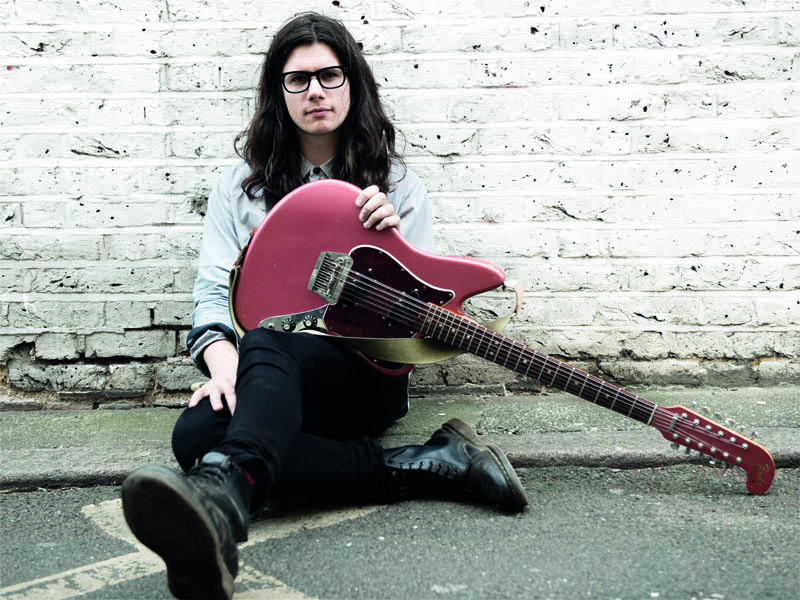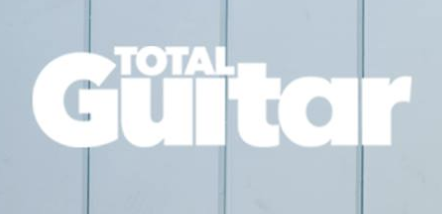The Horrors' Joshua Hayward talks pedal DIY and soundscapes
We meet the man behind The Horrors' shimmering sonic soundscapes

The Horrors' Joshua Hayward has designed and built "hundreds" of pedals and effects units
Since they first hit the nation’s stages nearly 10 years ago – bedecked in funereal attire and pumping out a savage garage post-punk brew –The Horrors’ sound has been consistently evolving.
And, while the band’s last three albums – 2009’s Primary Colours, 2011’s Skying and 2014’s Luminous – have seen a myriad of synths come to the fore, Joshua Third’s inventive guitar-playing and experimental use of effects have been ever-central constants.
What really stands Joshua out from the majority of his peers is that his experimental dabblings are not just limited to the stage, studio or rehearsal room. Since The Horrors started in 2005, the guitarist – who has a first-class honours degree in physics – has designed and built “hundreds” of guitar effects units and pedals for the band.
When it comes to carving out The Horrors’ pulsating psychedelic soundscapes, Joshua and his electronics workshop have played a more-than-essential role.
How did you first get into designing and building your own guitar effects and pedals?
“I didn’t have enough money to buy my own!
"I got the Craig Anderton book [Do-It-Yourself Projects For Guitarists] when I was in secondary school and I made some PCBs [Printed Circuit Boards], but I never quite got around to actually building the pedals.
"When I was 20, I finally got round to doing it. The first thing I built was a Big Muff, but I didn’t like the sound of it and, in a rage, I broke it – but it’d taken me ages to do. I’d never used a soldering iron before and it was an absolute nightmare, but I didn’t stop, and I made another pedal pretty soon.”
What other pedals did you build during the early days of The Horrors?
“Another early one was a Fuzz Factory clone, but that pissed everyone off endlessly andI didn’t really use it much.
"I also had a [Boss] DS-1 that I modified to sound like a Nintendo! I think a lot of people have done that. You just take the back off, connect the two bits in the back with a little wire and then it sounds likea Nintendo… and it’s useless!
"The damn thing doesn’t work in bypass mode anymore, but it was just quite funny, and I was like, ‘Wow I did that – that sounds really bizarre!’”
Was there a turning point in terms of producing your first effect that worked really well?
“Very early on, I took a small bunch of parts on tour so I could build a pedal, and I built a [Univox] Super-Fuzz because I love Poison Ivy and I love The Cramps.
"That’s my ideal way of how a guitar should sound. Their guitar sound is just the most beautiful thing in the world. Not only did it work really well but I also learned a lot about design and circuitry.
"I’ve built about six of them now, but the first oneI built was the one with the crazy fabric on it. One big thing I realised was there’s two transistors in the circuit that would have been randomly selected, and they make each pedal sound completely different.
"I’ve had Super-Fuzzes since, and played on other people’s, and they never sound the same. It’s all because of these two little transistors, which – when they’re different – just completely change the sound. If they match, it becomes like a super-clean octave, but if they’re completely off it just becomes this outrageous fuzz, and you can go everywhere in-between once you put a pot in to control how matched they are.”

Maths matters
And have you used those on many recordings by The Horrors?
“That’s the fuzz sound on the first record[Strange House], although I’ve used it on every record since. Even on the new record[Luminous], I would have used it on maybe half of it. It’s really good for lead, especially the magic one I have where you can blend in how much upper octave you want!
"I’ve constantly developed it to do what I want it to. I’ve split the latest one into two pedals, so I’ve got the octave section in one bit and the distortion bit in the other. The octave bit’s really nice because it gives you really nice Krauty-type, almost sequenced-sounding lines. Sometimes, you just want that on its own, but then you can kick the fuzz in and it just goes crazy!”
How would you say your physics degree has helped you with your effects building?
“Well, I really liked electronics, and I really wanted to go to university and learn to build musical equipment. Then someone told me that if I did electronics I’d end up working for a mobile phone company doing satellites, which was probably actually quite accurate, so I did physics instead!
"But, when I got there,I realised they had no interest at all in teaching anything like that because it was really beneath them to just play with these childish 60s analogue ideals. I did a really good cosmic ray muon detection system, though, andI quite enjoyed labs; but building musical equipment was just seen as silliness.
"However, it did teach me loads of maths – and maths is the hard bit. I remember learning that really early, way before university. It always amazed me, like ‘Why is a 100-watt amp twice as loud as a 10-watt amp?’ Then I read up on logarithms and I started seeing things exponentially, and then it all kind of makes sense.
"That’s how pitch works and how you understand how to make things musical and controllable, and you understand why pots work the way they do. You need to know all that stuff. I could then look at a circuit and understand why it sounded the way it did and how I could change things to sound different.”
When you’re designing pedals, how far are you aiming to match a sound in your head, or a tone on a particular record?
“Kind of both really, or I’ll hear something and I’ll want to make it a bit different and more usable for me. I originally wanted every one louder and weirder and battier. I thinkI managed to make everything oscillate weirdly, like chorus pedals when they’re really extreme.
"I thought the normal chorus sound was boring and I wanted a sound like a really warped record, which is a really complex wave. I learnt how to put loads of sine waves in with loads of LFOs [Low-Frequency Oscillations] controlling chorus pedals, thenI took the dry signal out so it sounded like a record going nuts.
"You would play it and it would go in and out and then stop, like a needle skipping, then it would come back on. It was the most fun thing to do, and I used it on Sea Within A Sea. There’s that little noise section where I was just making loops up and it was all coming through this thing. I just wanted it to sound absolutely mental.”
Can you give some other examples of the home-built effects you’ve used with The Horrors?
“On the third record [Skying], I built a modular synthesizer and just fed my guitar through. I built this really good pitch detection thing because I loved playing through [Korg] MS-20s.
"The basic idea was to have it start the pitch detection again every time you played a new note. I taught it what a pick sounded like – through building a circuit – so when you played with a pick, it would detect the burst of high frequencies present.
"And while I never ended up using the oscillators, I did use the filters in it, and that helped me develop the filter I use the most, which is a bit like a Steiner-Parker filter. It’s a really weird sound to describe, but you can really hear it on Mine And Yours from the new album.
"If you listen to the lead line on that, that’s the sound. If you don’t want a guitar to sound like a guitar, just get a moderate drive and a filter, and then you can start making different textures.
"On Jealous Sun, I built a box that took me ages to make.It basically has four filter banks, like parametric EQs, with Vactrols as the control elements so you can control the frequency.
"I built a small simple analogue computer, which I programmed to control the frequencies and the space between them.
"I basically wanted the guitars to sound like an army of people marching and shouting!”
Do you have any new effects units in the pipeline?
“I want to start programming digital pedals and I’m going to try and learn C++ on tour. You can do really crazy things with digital,like split the signal to bits and just affect one half of it.
"You could do things like effects loops on only the bottom three strings, or you can make all the bottom strings ring out and the top ones all glide between each other, so suddenly it sounds almost like you’re playing slide in a weird crazy way. I’m always looking at ways of opening myself up to be able to do all these different things that guitars can’t normally do.”
Total Guitar is Europe's best-selling guitar magazine.
Every month we feature interviews with the biggest names and hottest new acts in guitar land, plus Guest Lessons from the stars.
Finally, our Rocked & Rated section is the place to go for reviews, round-ups and help setting up your guitars and gear.
Subscribe: http://bit.ly/totalguitar


